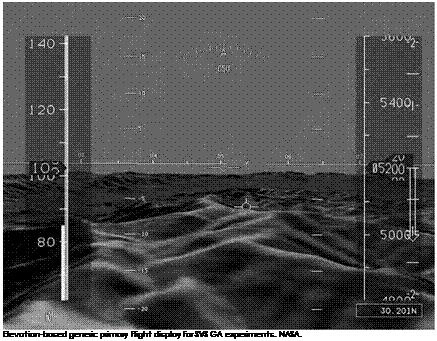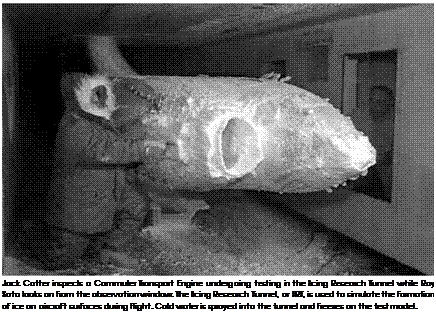 In 1997, in response to a White House Commission on Aviation Safety and Security, NASA created the Aviation Safety Program. SVS fit perfectly within the goals of this program, and the NASA established a SVS project under AvSp, commencing on October 1, 1999. Daniel G. Baize, who had led the XVS element of the Flight Deck ITD Team during the HSR program, continued in this capacity as Project Manager for SVS under AvSP. He wasn’t the only holdover from HSR: most of the talented researchers from HSR XVS moved directly to similar roles under AvSP and were joined by their Langley LVLASO colleagues. Funding for FL.5 transitioned from HSR to AvSP, effectively making FL.5 the first of many successful AvSP SVS flight tests.
In 1997, in response to a White House Commission on Aviation Safety and Security, NASA created the Aviation Safety Program. SVS fit perfectly within the goals of this program, and the NASA established a SVS project under AvSp, commencing on October 1, 1999. Daniel G. Baize, who had led the XVS element of the Flight Deck ITD Team during the HSR program, continued in this capacity as Project Manager for SVS under AvSP. He wasn’t the only holdover from HSR: most of the talented researchers from HSR XVS moved directly to similar roles under AvSP and were joined by their Langley LVLASO colleagues. Funding for FL.5 transitioned from HSR to AvSP, effectively making FL.5 the first of many successful AvSP SVS flight tests.
Langley’s SVS research project consisted of eight key technical areas: database rendering, led by Jarvis "Trey” Arthur, III, and Steve Williams; pathway concepts, led by Russell Parrish, Lawrence "Lance” Prinzel, III, Lynda Kramer, and Trey Arthur; runway incursion prevention systems, led by Denise R. Jones and Steven D. Young; controlled flight into terrain (CFIT) avoidance using SVS, led by Trey Arthur; loss of control avoidance using SVS, led by Douglas T. Wong and Mohammad A. Takallu; database integrity, led by Steven D. Young; SVS sensors development, led by Steven Harrah; and SVS database development, led by Robert A. Kudlinski and Delwin R. Croom, Jr. These individuals were supported by numerous NASA and contractor researchers and technicians, and by a number of dedicated industry and academia partners.[1173] By any measure, SVS development was moving forward along a broad front at the turn of the 21st century.
The first flight test undertaken under the SVS project occurred at the Dallas-Fort Worth International Airport (DFW) in September and October 2000. It constituted the culmination of Langley’s LVLASO project,
demonstrating the results of 7 years of research into surface display concepts for reduced-visibility ground operations. Because funding for the LVLASO experiment had transitioned to the AvSP, SVS Project Manager Dan Baize decided to combine the LVLASO elements of the test with continued SVS development. SVS was by now bridging the ground oper – ation/flight operation regimes into one integrated system, although at DFW, each was tested separately.
 Reduced ground visibility has always constituted a risk in aircraft operations. On March 27, 1977, an experienced KLM 747 flight crew holding for takeoff clearance at Los Rodeos Airport, Tenerife, fell victim to a fatal combination of misunderstood communications and reduced ground visibility. Misunderstanding tower communications, the crewmembers began their takeoff roll and collided with a Pan American 747 still taxiing on landing rollout on the active runway. This accident claimed 578 lives, including all aboard the KLM aircraft and still constitutes the costliest accident in aviation history.[1174] Despite the Tenerife disaster, runway incursions continued to rise, and the potential for further tragedies large and small was great. Incursions rose from 186 in 1993 to 431 in 2000, a 132-percent increase. In the first 5 months of 2000, the FAA and National Transportation Safety Board (NTSB) logged 158 incursions, an average of more than 1 runway incursion incident each day.[1175]
Reduced ground visibility has always constituted a risk in aircraft operations. On March 27, 1977, an experienced KLM 747 flight crew holding for takeoff clearance at Los Rodeos Airport, Tenerife, fell victim to a fatal combination of misunderstood communications and reduced ground visibility. Misunderstanding tower communications, the crewmembers began their takeoff roll and collided with a Pan American 747 still taxiing on landing rollout on the active runway. This accident claimed 578 lives, including all aboard the KLM aircraft and still constitutes the costliest accident in aviation history.[1174] Despite the Tenerife disaster, runway incursions continued to rise, and the potential for further tragedies large and small was great. Incursions rose from 186 in 1993 to 431 in 2000, a 132-percent increase. In the first 5 months of 2000, the FAA and National Transportation Safety Board (NTSB) logged 158 incursions, an average of more than 1 runway incursion incident each day.[1175]
Recognizing the emphasis on runway incursion accident prevention, researchers evaluated a Runway Incursion Prevention System (RIPS), the key element in the DFW test. RIPS brought together advanced technologies, including surface communications, navigation, and surveillance systems for both air traffic controllers and pilots. RIPS utilized both head-down moving map displays for pilot SA and data link communication and an advanced HUD for real-time guidance. While
RIPS research was occurring on the ground, SVS concepts were being evaluated in flight for the first time in a busy terminal environment. This evaluation included a Langley-developed opaque HUD concept. Due to the high capacity of flight operations during normal hours at DFW, all research flights occurred at night. HSR veterans Lou Glaab, Lynda Kramer, Jarvis "Trey” Arthur, Steve Harrah, and Russ Parrish managed the SVS experiments, while LVLASO researchers Denise Jones and Richard Hueschen led the RIPS effort.[1176]
 The successor to Langley’s remarkable ATOPS B-737 was a modified Boeing 757, the Aries research airplane. Aries—a name suggested by Langley operations engineer Lucille Crittenden in an employee suggestion campaign—stood for Airborne Research Integrated Experiments System. For all its capabilities, Aries had a somewhat checkered history. Like many new research programs, it provided systemic challenges to researchers that they had not encountered with the B-737. Indeed, Langley’s research pilot staff had favored a smaller aircraft than the 757, one that would be less costly and demanding to support. Subsequently, the 757 did prove complex and expensive to maintain, impacting the range of modifications NASA could make to it. For example, Aries lacked the separate mid-fuselage Research Flight Deck that had proven so adaptable and useful in the ATOPS 737. Instead, its left seat of the cockpit (traditionally the "captain’s seat” in a multipilot aircraft) of was modified to become a Forward Flight Deck research station. This meant that, unlike the 737, which had two safety pilots in the front cockpit while a test crew was using the Research Flight Deck, the 757 was essentially a "one safety pilot at the controls” aircraft, with the right-seat pilot performing the safety role and another NASA pilot riding in the center jump seat aft and between both the research and safety pilot. This increased the workload of both the research and safety pilots.[1177]
The successor to Langley’s remarkable ATOPS B-737 was a modified Boeing 757, the Aries research airplane. Aries—a name suggested by Langley operations engineer Lucille Crittenden in an employee suggestion campaign—stood for Airborne Research Integrated Experiments System. For all its capabilities, Aries had a somewhat checkered history. Like many new research programs, it provided systemic challenges to researchers that they had not encountered with the B-737. Indeed, Langley’s research pilot staff had favored a smaller aircraft than the 757, one that would be less costly and demanding to support. Subsequently, the 757 did prove complex and expensive to maintain, impacting the range of modifications NASA could make to it. For example, Aries lacked the separate mid-fuselage Research Flight Deck that had proven so adaptable and useful in the ATOPS 737. Instead, its left seat of the cockpit (traditionally the "captain’s seat” in a multipilot aircraft) of was modified to become a Forward Flight Deck research station. This meant that, unlike the 737, which had two safety pilots in the front cockpit while a test crew was using the Research Flight Deck, the 757 was essentially a "one safety pilot at the controls” aircraft, with the right-seat pilot performing the safety role and another NASA pilot riding in the center jump seat aft and between both the research and safety pilot. This increased the workload of both the research and safety pilots.[1177]
As configured for the DFW tests, Aries had an evaluation pilot in the left seat, a NASA safety pilot/pilot-in-command in the right seat, a secondary NASA safety pilot in the center jump seat, and the principal investigator in the second jump seat. The safety pilot monitored two communication frequencies and an intercom channel connected to the numerous engineers and technicians in the cabin. Because the standard B-757 flight deck instrumentation did not support the SVS displays, the SVS
researchers developed a portable SVS primary flight display that would be temporarily mounted over the pilot’s instrument panel. An advanced HUD was installed in the left-seat position as well, for use during final approach, rollout, turnoff, and taxi. The HUD displayed symbology relating runway and taxiway edge and centerline detail, deceleration guidance, and guidance to gates and hold-short points on the active runway. As well, the Aries aircraft had multifunction display capability, including an electronic moving map (EMM) that could be "zoomed” to various scales and that could display the DFW layout, locations of other traffic, and ATC instructions (the latter displayed both in text and visual formats). Additionally, a test van outfitted with an Automatic Dependent Surveillance-Broadcast (ADS-B) Mode S radar transponder, an air traffic control Radio Beacon System (ATCRBS) transponder, a Universal Access Transceiver (UAT) data link, and a differential GPS was deployed to test sites and used to simulate an aircraft on the ground that could interact during various scenarios with the Aries test aircraft.[1178]
 The DFW tests occurred in October 2000, with the Aries 757 interacting with the surrogate "airliner” van, and with the airport equipped on its east side with a prototype FAA ground surveillance system developed under the Agency’s runway incursion reduction program. Researchers were encouraged by the test results, and industry and Government evaluation pilots agreed that SVS technologies showed remarkable potential, reflecting the thorough planning of the test team and the skill of the flight crew. The results were summarized by Denise R. Jones, Cuong C. Quach, and Steven D. Young as follows:
The DFW tests occurred in October 2000, with the Aries 757 interacting with the surrogate "airliner” van, and with the airport equipped on its east side with a prototype FAA ground surveillance system developed under the Agency’s runway incursion reduction program. Researchers were encouraged by the test results, and industry and Government evaluation pilots agreed that SVS technologies showed remarkable potential, reflecting the thorough planning of the test team and the skill of the flight crew. The results were summarized by Denise R. Jones, Cuong C. Quach, and Steven D. Young as follows:
The measured performance of the traffic reporting technologies tested at DFW do meet many of the current requirements for surveillance on the airport surface. However, this is apparently not sufficient for a robust runway incursion alerting function with RIPS. This assessment is based on the observed rats of false alerts and missed detections. All false alerts and missed detections at DFW were traced to traffic data that was inaccurate, inconsistent, and/or not received in a timely manner….
All of the subject pilots were complimentary of the RIPS tested at DFW. The pilots stated that the system has the potential
to reduce or eliminate runway incursions, although human factors issues must still be resolved. Several suggestions were made regarding the alerting symbology which will be incorporated into future simulation studies. The audible alert was the first display to bring the pilots’ attention to the incursion. The EMM would generally be viewed by the non-flying pilot at the time of an incursion since the flying pilot would remain heads up. The pilots stated that two-stage alerting was not necessary and they would take action on the first alert regardless. This may be related to the fact that this was a single pilot operation and the subject pilot did not have the benefit of co-pilot support. In general, after an incursion alert was received, the subject pilots stated they would not want maneuver guidance during final approach or takeoff roll but would like guidance on whether to stop or continue when taxiing across a runway.
 All of the pilots stated that, in general, the onboard alerts were generated in a timely manner, allowing sufficient time to react to the potential conflict. They all felt safer with RIPS onboard.[1179]
All of the pilots stated that, in general, the onboard alerts were generated in a timely manner, allowing sufficient time to react to the potential conflict. They all felt safer with RIPS onboard.[1179]
Almost exactly a year later, the SVS project deployed to a remote location for a major integrated flight test and demonstration of the Aries B-757, the third year in a row that the team had deployed for an offsite test. This time, the location was the terrain-challenged Eagle County Regional Airport near Vail, CO. Eagle-Vail is situated in a valley with mountains on three sides of the runway. It is also at an elevation of 6,540 feet, giving it a high-density altitude on hot summer days, which is not conducive to airplane performance. Langley’s Aries B-757 was configured with two HUDs and four head-down concepts developed by NASA and its industry partner, Rockwell Collins. Enhanced Vision Systems were evaluated as well for database integrity monitoring and imaging the runway environment. Three differently sized head-down PFDs were examined: a "Size A” system, measuring 5.25 inches wide by 5 inches tall, such as flown on a conventional B-757-200 series aircraft; a "Size D” 6.4-inch-wide by 6.4-inch-tall display, such as employed on the B-777 family; and an experimental "Size X,” measuring 9 inches wide by 8 inches tall, such as might be flown on a future advanced aircraft.
Additionally, multiple radar altimeters and differential GPS receivers gathered absolute altitude data to be used in developing database integrity monitoring algorithms.[1180]
 Randy Bailey was NASAs Principal Investigator, joined by Russ Parrish, Dan Williams, Lynda Kramer, Trey Arthur, Steve Harrah, Steve Young, Rob Kudlinski, Del Croom, and others. Seven pilots from NASA, the FAA, the airline community, and Boeing evaluated the SVS concepts, with particular attention to the terrain-challenged approaches. While fixed-base simulation had indicated that SVS could markedly increase flight safety in terrain-challenged environments, flight-test data had not yet been acquired under such conditions, aside from the limited experience of the Air Force-Calspan TIFS NC-131H trials at Asheville, NC, in September 1999. Of note was the ability of the B-757 to fly circling approaches under simulated instrument meteorological conditions (IMC) using the highly developed SVS displays. Until this test, commercial jet airplanes had not made circling approaches to Eagle-Vail under IMC.[1181] SVS were proving their merit in the most challenging of arenas, something evident in the comments of one evaluation pilot, who noted afterward:
Randy Bailey was NASAs Principal Investigator, joined by Russ Parrish, Dan Williams, Lynda Kramer, Trey Arthur, Steve Harrah, Steve Young, Rob Kudlinski, Del Croom, and others. Seven pilots from NASA, the FAA, the airline community, and Boeing evaluated the SVS concepts, with particular attention to the terrain-challenged approaches. While fixed-base simulation had indicated that SVS could markedly increase flight safety in terrain-challenged environments, flight-test data had not yet been acquired under such conditions, aside from the limited experience of the Air Force-Calspan TIFS NC-131H trials at Asheville, NC, in September 1999. Of note was the ability of the B-757 to fly circling approaches under simulated instrument meteorological conditions (IMC) using the highly developed SVS displays. Until this test, commercial jet airplanes had not made circling approaches to Eagle-Vail under IMC.[1181] SVS were proving their merit in the most challenging of arenas, something evident in the comments of one evaluation pilot, who noted afterward:
I often commented to people over the years that I never ever flew a circling approach in the -141 [Lockheed C-141 Starlifter] that I was ever comfortable with, particularly at night. It always demanded a lot of attention. This was the first time I ever had an occasion of circling an approach with the kind of information I would love to have in a circling approach. Keeping me safe, I could see the terrain, taking me where I want to go, getting me all types of information in terms to where I am relative to the end of the runway. I mean it’s the best of all possible worlds in terms of safety.[1182]
Unfortunately, this proved to be the last major flight-test program flown on NASA’s B-757 aircraft. An incident during the Eagle-Vail testing had profound effects on its future, illustrating the weakness of not
having an independent Research Flight Deck separated from the Forward Flight Deck, which could be occupied by a team of "full-time” safety pilots. After the B-757 missed its approach at Eagle-Vail following a test run, its auto throttles disconnected, without being noticed by the busy flight crew. The aircraft became dangerously slow in the worst possible circumstances: low to the ground and at a high-density altitude. In the subsequent confusion during recovery, the evaluation pilot, unaware that Aries lacked the kind of Full Authority Digital Electronic Control (FADEC) for its turbofan engines on newer B-757s, inadvertently overboosted both powerplants, resulting in an in-flight abort. The incident reflected as well the decision to procure the B-757 without FADEC engine controls and insufficient training of evaluation pilots before their sorties into the nuances of the non-FADEC airplane. The busy flight deck caused by the FFD design likely also played a role in this incident, as it likely did in previous, less serious events. Safety concerns raised by pilots over this and other issues resulted in the grounding of the B-757 in June 2003. Subsequent examination revealed that it had overloaded floor beams, necessitating costly repairs. Though these repairs were completed during a 12-month period in 2004-2005, NASA retired it from service in 2005, bringing its far-too-brief operational career to an end.[1183]
 In 2001, NASA Langley’s SVS project was organized into two areas: commercial and business aircraft and general-aviation. Randy Bailey had come to NASA from Calspan and became a Principal Investigator for CBA tests, and Lou Glaab assumed the same role for GA. Monica Hughes, Doug Wong, Mohammad Takallu, Anthony P. Bartolome, Francis G. McGee, Michael Uenking, and others joined Glaab in the GA program, while most of the other aforementioned researchers continued with CBA. Glaab and Hughes led an effort to convert Langley’s Cessna 206-H Stationaire into a GA SVS research platform. A PFD and NAV display were installed on the right side of the instrument panel, and an instrumentation pallet in the cabin contained processors to drive the displays and a sophisticated data acquisition system.[1184]
In 2001, NASA Langley’s SVS project was organized into two areas: commercial and business aircraft and general-aviation. Randy Bailey had come to NASA from Calspan and became a Principal Investigator for CBA tests, and Lou Glaab assumed the same role for GA. Monica Hughes, Doug Wong, Mohammad Takallu, Anthony P. Bartolome, Francis G. McGee, Michael Uenking, and others joined Glaab in the GA program, while most of the other aforementioned researchers continued with CBA. Glaab and Hughes led an effort to convert Langley’s Cessna 206-H Stationaire into a GA SVS research platform. A PFD and NAV display were installed on the right side of the instrument panel, and an instrumentation pallet in the cabin contained processors to drive the displays and a sophisticated data acquisition system.[1184]
SVS was particularly important for general aviation, in which two kinds of accidents predominated: controlled flight into terrain and loss
 |
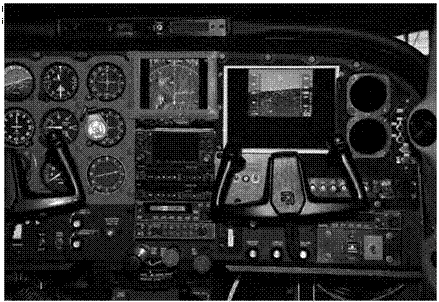 |
of horizon reference (followed by loss of aircraft control and ground impact).[1185] To develop a candidate set of GA display concepts, Glaab conceived a General-Aviation Work Station (GAWS) fixed-base simulator, similar to the successful Virtual Imaging Simulator for Transport Aircraft Systems simulator. Doug Wong and other team members helped bring the idea to reality, and GAWS allowed the GA researchers and evaluation pilots to design and validate several promising GA SVS display sets. The GA implementation differed from the previous and ongoing CBA work, in that SVS for the GA community would have to be far lower in cost, computational capability, and weight. A HUD was deemed too expensive, so the PFD would assume added importance. An integrated simulation and flight-test experiment using GAWS and the Cessna 206 known as Terrain Portrayal for Head-Down Displays (TP-HDD) was commenced in summer 2002. The flight test spanned August through October at Newport News and Roanoke, two of Virginia’s regional airports.[1186]
Both EBG and photorealistic displays were evaluated, and results indicated that equivalent performance across the pilot spectrum could
be produced with the less computationally demanding EBG concepts. This was a significant finding, especially for the computationally and economically challenged low-end GA fleet.[1187]
 The SVS CBA team had planned a comprehensive flight test using the Aries B-757 for summer 2003 at the terrain-challenged Reno-Tahoe International Airport. This flight test was to have included flight and surface runway incursion scenarios and operations using integrated SVS displays, including an SVS HUD and PFD, RIPS symbology, hazard sensors, and database integrity monitoring in a comparative test with conventional instruments. The grounding of Aries ended any hope of completing the Reno-Tahoe test in 2003. Set back yet undeterred, the SVS CBA researchers looked for alternate solutions. Steve Young and his Database Integrity Monitoring Experiment (DIME) team quickly found room on NASA Ames’s DC-8 Airborne Science Platform in July and August for database integrity monitoring and Light Detection and Ranging (LIDAR) elevation data collection.[1188] At the same time, managers looked for alternate airframes and negotiated an agreement with Gulfstream Aerospace to use a G-V business jet with Gulfstream’s Enhanced Vision System. From July to September 2004 at Wallops and Reno-Tahoe International Airport, the G-V with SVS CBA researchers and partners from Rockwell Collins, Gulfstream, Northrop Grumman, Rannoch Corporation, Jeppesen, and Ohio University evaluated advanced runway incursion technologies from NASA-Lockheed Martin and Rannoch Corporation and SVS display concepts from Langley and Rockwell Collins. Randy Bailey again was project lead. Lynda Kramer and Trey Arthur were Principal Investigators for the SVS display development, and Denise Jones led the runway incursion effort. Steve Young and Del Croom managed the DIME investigations, and Steve Harrah continued to lead sensor development.[1189]
The SVS CBA team had planned a comprehensive flight test using the Aries B-757 for summer 2003 at the terrain-challenged Reno-Tahoe International Airport. This flight test was to have included flight and surface runway incursion scenarios and operations using integrated SVS displays, including an SVS HUD and PFD, RIPS symbology, hazard sensors, and database integrity monitoring in a comparative test with conventional instruments. The grounding of Aries ended any hope of completing the Reno-Tahoe test in 2003. Set back yet undeterred, the SVS CBA researchers looked for alternate solutions. Steve Young and his Database Integrity Monitoring Experiment (DIME) team quickly found room on NASA Ames’s DC-8 Airborne Science Platform in July and August for database integrity monitoring and Light Detection and Ranging (LIDAR) elevation data collection.[1188] At the same time, managers looked for alternate airframes and negotiated an agreement with Gulfstream Aerospace to use a G-V business jet with Gulfstream’s Enhanced Vision System. From July to September 2004 at Wallops and Reno-Tahoe International Airport, the G-V with SVS CBA researchers and partners from Rockwell Collins, Gulfstream, Northrop Grumman, Rannoch Corporation, Jeppesen, and Ohio University evaluated advanced runway incursion technologies from NASA-Lockheed Martin and Rannoch Corporation and SVS display concepts from Langley and Rockwell Collins. Randy Bailey again was project lead. Lynda Kramer and Trey Arthur were Principal Investigators for the SVS display development, and Denise Jones led the runway incursion effort. Steve Young and Del Croom managed the DIME investigations, and Steve Harrah continued to lead sensor development.[1189]
The Reno flight test was a success. SVS technologies had been shown to provide a significant improvement to safe operations in reduced visibility for both flight and ground operations. SVS CBA researchers and managers, moreover, had shown a tenacity of purpose in completing project objectives despite daunting challenges. The last SVS flight test was approaching, and significant results awaited.
 In August and September 2005, Lou Glaab and Monica Hughes led their team of SVS GA researchers on a successful campaign to argue for the concept of equivalent safety for VMC operations and SVS in IMC. Russ Parrish, at the time retired from NASA, returned to lend his considerable talents to this final SVS experiment. Using the Langley Cessna 206 from the TP-HDD experiment of 2002, Glaab and Hughes employed 19 evaluation pilots from across the flight-experience spectrum to evaluate three advanced SVS PFD and NAV display concepts and a baseline standard GA concept to determine if measured flight technical error (FTE) from the low-experience pilots could match that of the highly experienced pilots. Additionally, the question of whether SVS displays could provide VMC-like performance in IMC was explored. With pathway-based guidance on SVS terrain displays, it was found that the FTE of low-time pilots could match that of highly experienced pilots. Furthermore, for the more experienced pilots, it was observed that with advanced SVS displays, difficult IMC tasks could be done to VMC performance and workload standards. The experiment was carefully designed to allow the multivariate discriminant analysis method to precisely quantify the results. Truly, SVS potential for providing equivalent safety for IMC flight to that of VMC flight had been established. The lofty goals of the SVS project established 6 years previously had been achieved.[1190]
In August and September 2005, Lou Glaab and Monica Hughes led their team of SVS GA researchers on a successful campaign to argue for the concept of equivalent safety for VMC operations and SVS in IMC. Russ Parrish, at the time retired from NASA, returned to lend his considerable talents to this final SVS experiment. Using the Langley Cessna 206 from the TP-HDD experiment of 2002, Glaab and Hughes employed 19 evaluation pilots from across the flight-experience spectrum to evaluate three advanced SVS PFD and NAV display concepts and a baseline standard GA concept to determine if measured flight technical error (FTE) from the low-experience pilots could match that of the highly experienced pilots. Additionally, the question of whether SVS displays could provide VMC-like performance in IMC was explored. With pathway-based guidance on SVS terrain displays, it was found that the FTE of low-time pilots could match that of highly experienced pilots. Furthermore, for the more experienced pilots, it was observed that with advanced SVS displays, difficult IMC tasks could be done to VMC performance and workload standards. The experiment was carefully designed to allow the multivariate discriminant analysis method to precisely quantify the results. Truly, SVS potential for providing equivalent safety for IMC flight to that of VMC flight had been established. The lofty goals of the SVS project established 6 years previously had been achieved.[1190]
After the Reno SVS CBA flight test and spanning the termination of the SVS project in 2005, Randy Bailey, Lynda Kramer, Lance Prinzel and others investigated the integration of SVS and EVS capabilities in a comprehensive simulation test using Langley’s fixed-base Integrated Intelligent Flight Deck Technologies simulator, a modified Boeing 757 flight deck. Twenty-four airline pilots evaluated a HUD and auxiliary head-down display with integrated SVS and EVS presentations, where forward-looking infrared video was used as the enhanced vision signal.
The fusion here involved blending a synthetic database with the FLIR signal at eight discrete steps selectable by the pilot. Both FLIR and SV signals were imagery generated by the simulation computers. The results showed an increase in SA for all of the subject pilots. Surprisingly, obstacle runway incursion detection did not show significant improvement in either the SV, EV, or fused displays.[1191]
The SVS project formally came to an end September 30, 2005. Despite many challenges, the dedicated researchers, research pilots, and technicians had produced an enviable body of work. Numerous technical papers would soon document the results, techniques employed, and lessons learned. From SPIFR’s humble beginnings, NASA Langley had designed an SVS display and sensor system that could reliably transform night, instrument conditions to essentially day VMC for commer
cial airliners to single-engine, piston-powered GA aircraft. Truly, this was what NASA aeronautics was all about. And now, as the former SVS team transitioned to IIFDT, the researchers at JSC were once again about to take flight.











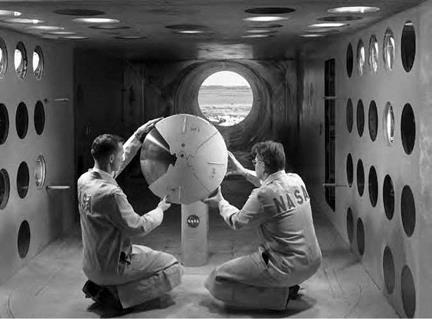
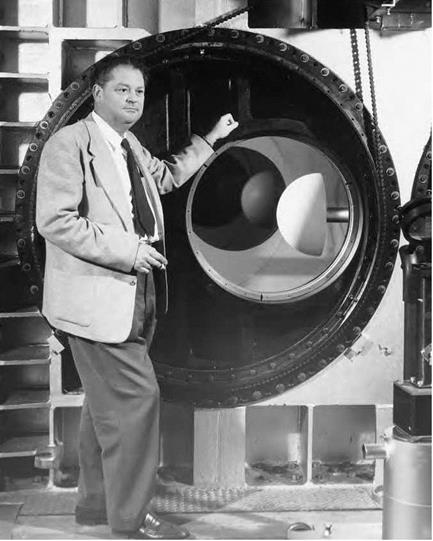

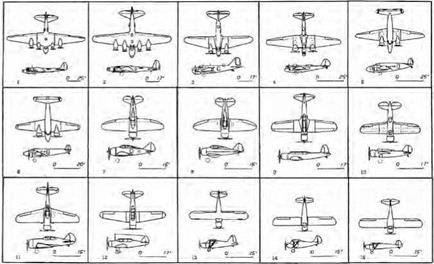
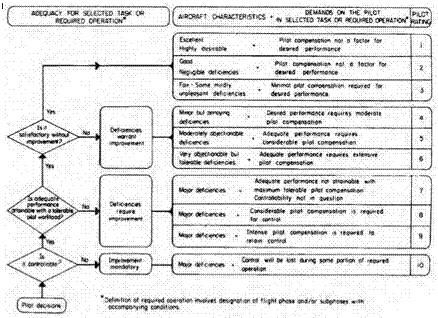
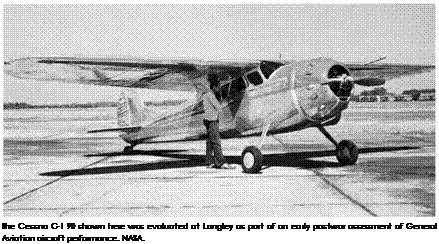
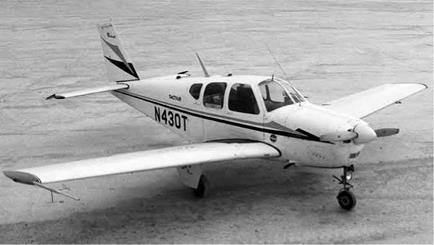
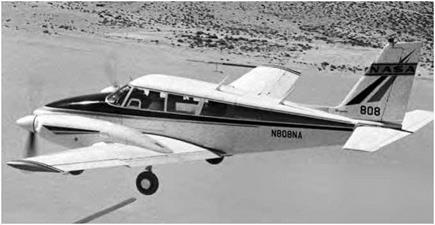

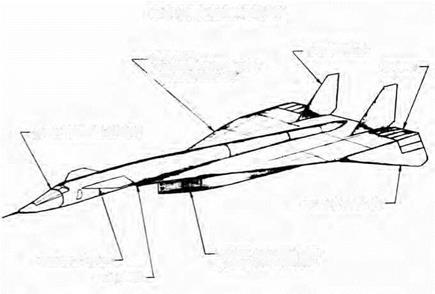 В-70 AERODYNAMIC FEATURES
В-70 AERODYNAMIC FEATURES
